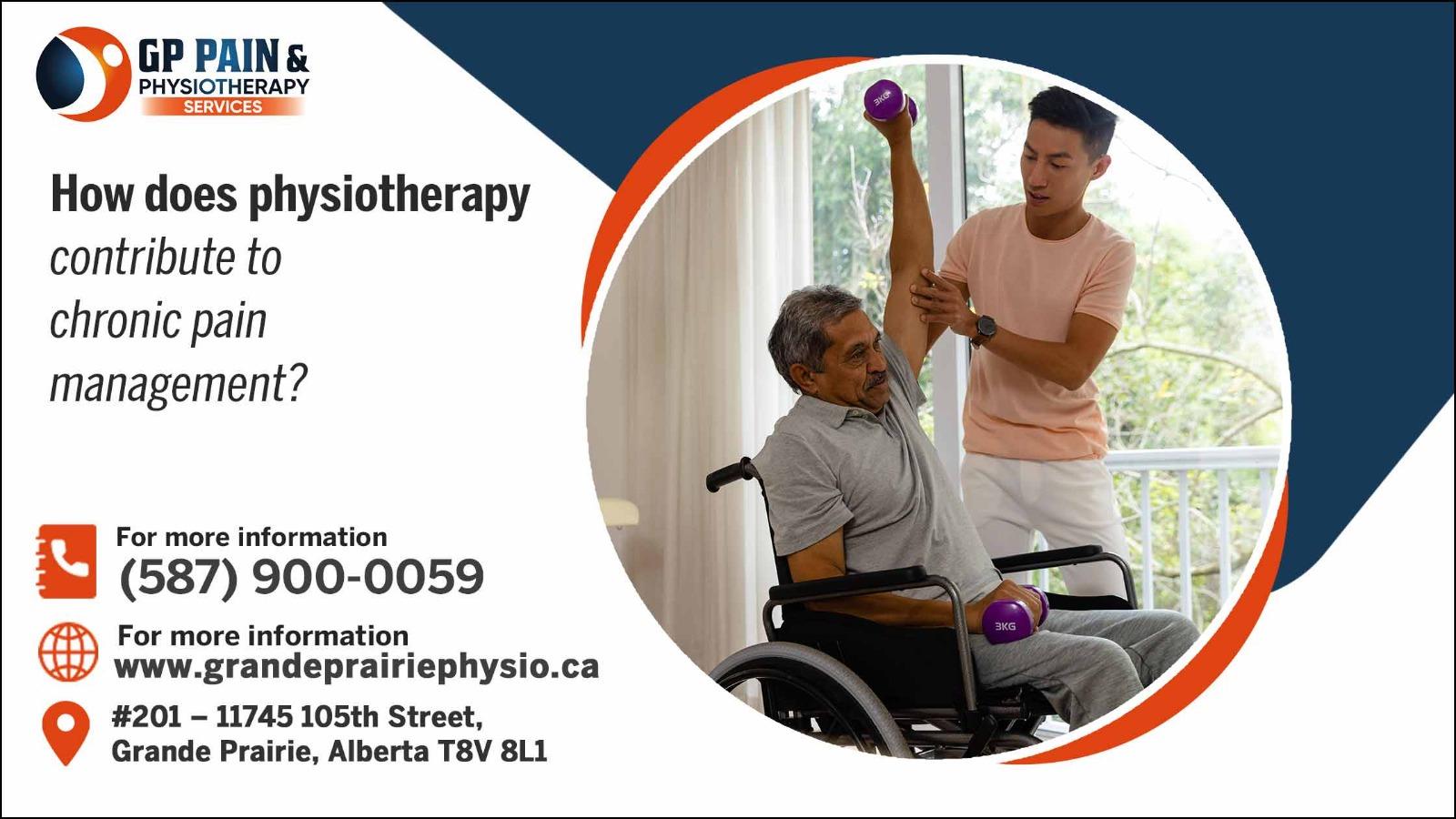Chronic pain is a persistent and complex issue that affects millions worldwide, significantly impacting their daily activities and overall quality of life. In Grande Prairie, physiotherapy has emerged as a cornerstone in managing chronic pain, offering a beacon of hope for those seeking relief. This guest post delves into how physiotherapy is vital in chronic pain management, utilizing a blend of specialized treatments and personalized care strategies.
What is Chronic Pain
A pain that lasts or recurs for more than three to six months is chronic. It can be continuous or intermittent, varying in intensity from mild to debilitating. Chronic pain isn't just a symptom of an underlying injury or illness; it becomes a chronic health condition in its own right. It can arise from initial injuries, such as a back sprain, or there may be an ongoing cause, such as an illness. However, in some cases, there might be no clear cause at all.
The Impact of Chronic Pain
Chronic pain, extending well beyond the usual healing process, not only diminishes physical capabilities but profoundly impacts emotional and psychological well-being. The relentless discomfort can lead to a significant reduction in mobility, flexibility, and strength, disrupting daily routines and sleep patterns. This constant battle against pain results in fatigue, lower levels of energy, and an increased risk of developing secondary health issues due to inactivity. Furthermore, the physical limitations imposed by chronic pain often make simple tasks daunting, complicating personal and professional responsibilities and diminishing overall life satisfaction.
Comprehensive Physiotherapy Approaches for Chronic Pain Management
Physiotherapy offers a multi-faceted approach to chronic pain management, addressing the physical, psychological, and lifestyle aspects of pain. Here's how various aspects of physiotherapy contribute to managing chronic pain effectively:
1. Manual Therapy Techniques
Manual therapy involves hands-on techniques to manipulate muscles and joints, aiming to reduce pain and improve function. These techniques include:
- Massage: Helps relax tense muscles, reduce pain perception, and improve blood circulation.
- Mobilization: Involves gentle movements of joints and bones to improve range of motion and decrease discomfort.
- Manipulation: A more forceful technique than mobilization, it helps in realigning joints, reducing pain, and enhancing mobility.
These methods can alleviate pain by loosening tight tissues, increasing flexibility, and promoting overall physical well-being.
2. Therapeutic Exercises
Exercise is an important aspect of physiotherapy in Grande Prairie for chronic pain management. Tailored exercise programs strengthen muscles, improve flexibility, and enhance joint stability, contributing to pain reduction and increased function. Types of therapeutic exercises include:
- Strengthening exercises: Build muscle strength to support and protect joints.
- Stretching routines: Enhance flexibility and decrease muscle tension.
- Low-impact aerobic conditioning: Improves cardiovascular health without putting undue stress on painful joints.
Regular, guided exercise helps in managing pain levels and preventing the recurrence of pain episodes.
3. Pain Education
Pain education demystifies the causes and mechanisms of pain, empowering patients with the knowledge to manage their condition. Understanding the biopsychosocial model of pain helps patients recognize the interplay between physical, psychological, and social factors in their pain experience. This awareness can lead to better coping strategies, reduced fear-avoidance behavior, and a more active role in self-management.
4. Electrophysical Modalities
Electrophysical modalities are used to reduce pain and inflammation, promote healing, and improve muscle function. These include:
- Transcutaneous Electrical Nerve Stimulation (TENS): Utilizes electrical currents to provide pain relief by interrupting or blocking pain signals sent to the brain.
- Ultrasound therapy: Applies sound waves to penetrate tissues, reducing inflammation, pain, and muscle spasms.
- Laser therapy: Uses light energy to enhance tissue repair and reduce pain and inflammation.
These modalities, when used appropriately, can complement physical therapy interventions by providing additional pain relief and facilitating healing.
5. Acupuncture and Dry Needling
Some physiotherapists are trained in acupuncture and dry needling, which can be effective in managing certain types of chronic pain. Ultra-thin needles are inserted into specific points on the body to help relieve pain. At the same time, dry needling targets trigger points in muscles to release tension and ease pain. Both techniques can stimulate the body's natural pain-relieving mechanisms, offering another tool in the comprehensive management of chronic pain.
6. Ergonomic and Postural Advice
Improper posture and poor ergonomics can exacerbate chronic pain conditions. Physiotherapists assess patients' posture and daily activities to identify and correct biomechanical inefficiencies. By providing personalized advice on ergonomics at work and home, physiotherapists help patients minimize strain on their bodies, preventing pain exacerbation and promoting healthier movement patterns.
7. Lifestyle Modification Support
Chronic pain management often requires lifestyle changes to improve overall health and well-being. Physiotherapists can offer guidance on:
- Diet: Nutritional advice to reduce inflammation and promote healing.
- Sleep hygiene: Strategies to improve sleep quality, as poor sleep can worsen pain.
- Stress management: Mindfulness and relaxation exercises to reduce stress-related muscle tension and pain.
Navigating the Path Forward: A Holistic Approach to Chronic Pain Management
Chronic pain management is a complex challenge, but with the right support and treatments, it's possible to lead a happier, more comfortable life. If you are searching for a “physiotherapist near me,” physiotherapy in Grand Prairie plays a critical role in chronic pain management, offering a hopeful path forward for those affected through personalized treatments, pain reduction techniques, therapeutic exercises, and education. Grande Prairie physiotherapy clinics, especially GP Pain & Physiotherapy Service, play a crucial role in this journey. By choosing physiotherapy as a treatment method, people with chronic pain could find relief and regain their overall quality of life.
Also read about:
What Makes Physiotherapy Essential for Injury Recovery
Best Furniture Shop in UAE
Best Gaming Product in UAE

